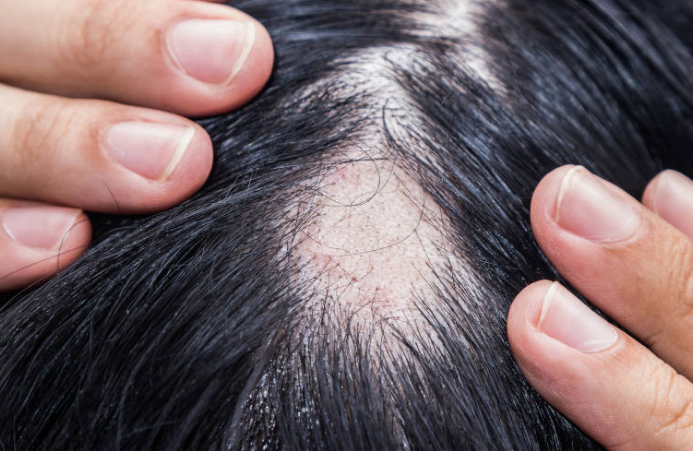Categories
- Blog (65)
Alopecia areata(AA) is patchy hair loss, in which one or more round, smooth, hairless patches appear on the scalp or other parts of the body that may vary in size but expand over time.
Compared to other hair loss, the biggest feature of AA is that the hair loss area is round, smooth, and not limited to the head skin.
Alopecia areata(AA) is an autoimmune disease that causes the immune system to mistakenly attack the hair follicles, resulting in hair loss. The exact cause of this immune response is not entirely clear, but it is believed to be related to genetic and environmental factors.
Heredity is greater in people with aAA, and even a family history of autoimmune disease can increase the risk
Environmental stress, viral infection, or other environmental factors may trigger the onset of alopecia areata in genetically susceptible individuals.
Having a genetic disorder of their own, including but not limited to thyroid disease, vitiligo, or type 1 diabetes
Therefore, for the inspection of alopecia areata, we can not judge it only rely on the naked eye, it is best to have a professional doctor through physical examination, tensile test (the doctor gently pulls the hair on the edge of the patch to see if it is easy to fall off), and we can also diagnose it by biopsy.

The first thing everyone thinks about hair loss is minoxidil, so is minoxidil effective in alopecia areata?
Minoxidil works by stimulating hair follicles to regenerate hair, so it is effective for alopecia areata, but it is not the best treatment.
There are two types Treatment options for different symptoms and causes:
Topical treatment: Use corticosteroid creams, ointments, etc. to reduce inflammation and suppress the immune response, and use minoxidil solutions to stimulate hair regrowth.
Oral medication: In severe cases, we can use oral steroids to control the condition, but it’s not a long term solution to avoid significant side effects. Targeting Immune system problems by drugs such as methotrexate or cyclosporin sometimes to suppress the immune system.
External treatment In addition to drugs can also choose phototherapy, such as the use of ultraviolet light to stimulate hair regeneration, combined with other treatments, to help enhance the treatment effect.